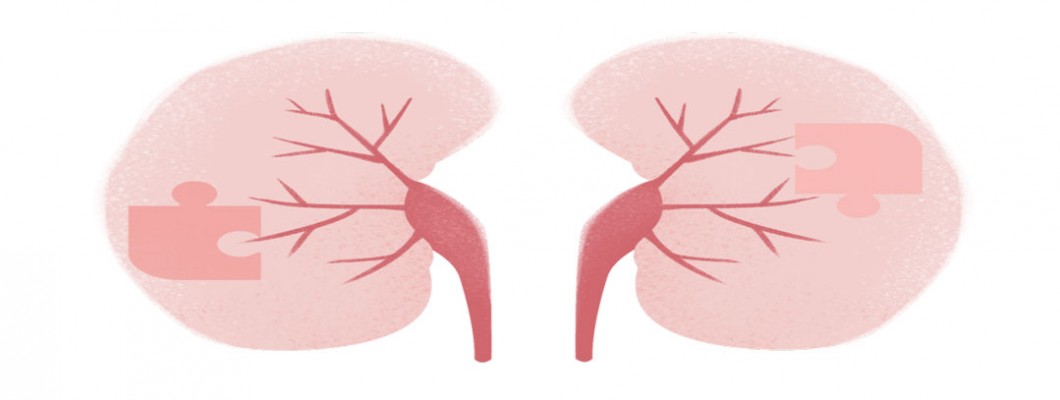
The kidneys, as vital metabolic organs, play a key role in filtering blood, removing waste, regulating fluid and electrolyte balance, and supporting endocrine functions. However, with aging or under the impact of chronic diseases, the kidneys are prone to oxidative stress damage, increased inflammation, and declining mitochondrial function — all of which can lead to impaired kidney function.
1. Alleviating Oxidative Stress and Inflammatory Damage in the Kidneys
As a highly metabolic organ, the kidneys produce large amounts of reactive oxygen species (ROS), triggering oxidative stress damage. NMN, once converted into NAD+, can activate SIRT1 and SIRT3, enhancing the activity of antioxidant enzymes such as superoxide dismutase (SOD) and glutathione peroxidase (GPx). This helps eliminate excess ROS and reduce lipid peroxidation products like malondialdehyde (MDA), which damage tubular epithelial cells.
At the same time, SIRT1 inhibits the NF-κB signaling pathway, reducing the release of inflammatory cytokines such as TNF-α and IL-6. This lowers chronic kidney inflammation and preserves the structural integrity of glomeruli and tubules. Animal studies have shown that NMN supplementation in diabetic nephropathy mouse models reduced kidney inflammatory markers by 30–40% and significantly alleviated glomerulosclerosis.
2. Improving Kidney Mitochondrial Function and Energy Metabolism
The normal function of kidney cells — especially tubular epithelial cells — relies on a steady supply of energy from mitochondria. With aging or in pathological states, mitochondrial function in the kidneys declines, leading to insufficient energy and impaired cellular repair capacity. NMN promotes mitochondrial biogenesis by upregulating mitochondrial transcription factor A (TFAM), increasing mitochondrial quantity and enhancing respiratory chain efficiency, which boosts ATP production.
In addition, NMN activates AMP-activated protein kinase (AMPK), which regulates cellular energy sensing, promotes fatty acid oxidation, and reduces lipid accumulation in kidney cells, thereby improving metabolic efficiency. Studies have shown that NMN supplementation in aged rats increased mitochondrial ATP output in kidney tissue by 20–25% and significantly improved energy supply in tubular epithelial cells.
3. Slowing Kidney Aging and Fibrosis Progression
Kidney fibrosis is a common pathological feature in the progression of chronic kidney disease (CKD), associated with the activation of renal interstitial fibroblasts and excessive collagen deposition. NMN helps delay renal interstitial fibrosis by activating SIRT1, which inhibits the transforming growth factor-β1 (TGF-β1) signaling pathway, reduces fibroblast-to-myofibroblast transition, and lowers the synthesis of collagen and fibronectin.
Additionally, NMN enhances autophagy activity in kidney cells, clearing senescent cells and damaged organelles, and reduces the harmful effects of the senescence-associated secretory phenotype (SASP) on the renal microenvironment. In mouse models of kidney fibrosis induced by unilateral ureteral obstruction, NMN supplementation reduced renal fibrosis area by 25–30% and significantly improved kidney function markers such as serum creatinine and blood urea nitrogen.
4. Protecting Kidney Vasculature and Hemodynamics
The kidneys have a rich blood supply, and healthy endothelial function is critical for maintaining proper renal perfusion. By boosting NAD⁺ levels, NMN improves endothelial cell function, promotes nitric oxide (NO) production, dilates renal blood vessels, and enhances renal blood flow and glomerular filtration rate (GFR).
Additionally, NMN reduces oxidative stress and inflammatory responses in renal blood vessels, protects the vascular wall structure, and mitigates the impact of atherosclerosis on kidney blood flow. In hypertensive nephropathy models, NMN supplementation reduced renal vascular resistance by 15–20% and helped maintain a relatively stable GFR.
5. Related Research
In March 2021, researchers found that NMN significantly inhibits DNA damage, cellular senescence, and inflammation in renal tubular cells, showing great potential for preventing or treating post-acute kidney injury fibrosis.

Leave a Comment